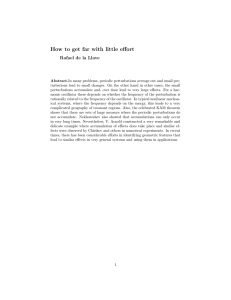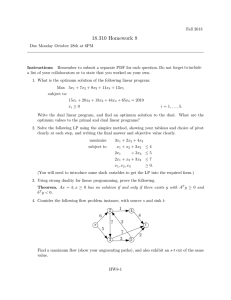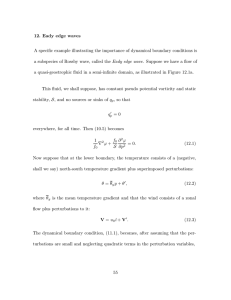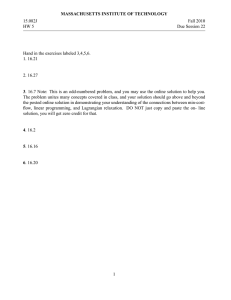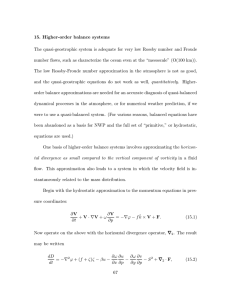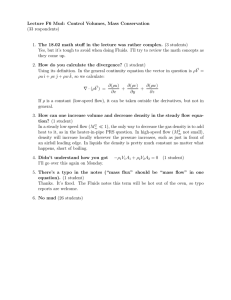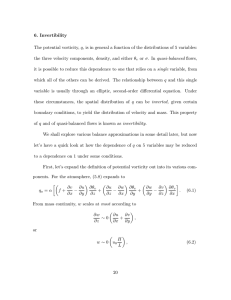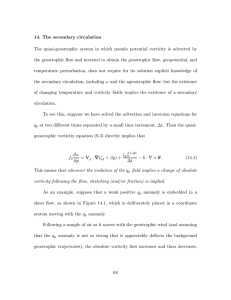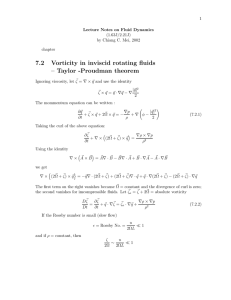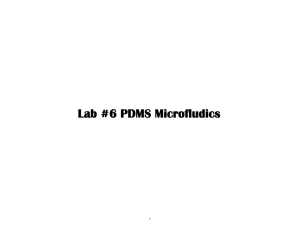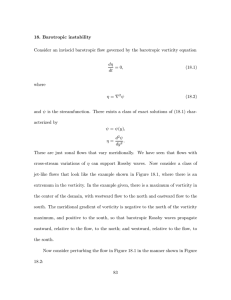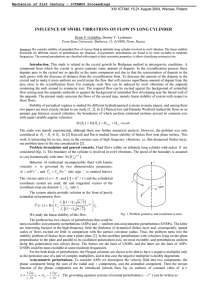Let us now turn to ... thinking, both as a mathematical physics framework and as a... 10.
advertisement
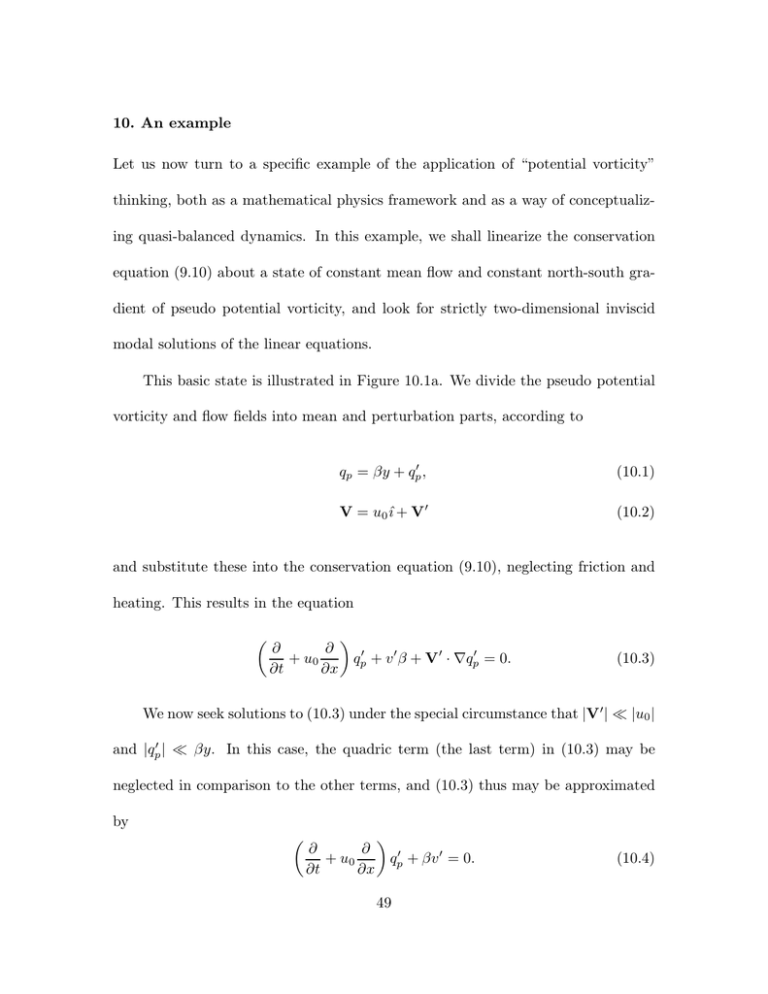
10. An example Let us now turn to a specific example of the application of “potential vorticity” thinking, both as a mathematical physics framework and as a way of conceptualiz­ ing quasi-balanced dynamics. In this example, we shall linearize the conservation equation (9.10) about a state of constant mean flow and constant north-south gra­ dient of pseudo potential vorticity, and look for strictly two-dimensional inviscid modal solutions of the linear equations. This basic state is illustrated in Figure 10.1a. We divide the pseudo potential vorticity and flow fields into mean and perturbation parts, according to qp = βy + qp , (10.1) V = u0 ı̂ + V (10.2) and substitute these into the conservation equation (9.10), neglecting friction and heating. This results in the equation ∂ ∂ + u0 ∂t ∂x qp + v β + V · ∇qp = 0. (10.3) We now seek solutions to (10.3) under the special circumstance that |V | |u0 | and |qp | βy. In this case, the quadric term (the last term) in (10.3) may be neglected in comparison to the other terms, and (10.3) thus may be approximated by ∂ ∂ + u0 ∂t ∂x qp + βv = 0. 49 (10.4) Figure 10.1a Also, according to (10.1) and (9.11), qp is given by qp 1 ∂ = ∇2 ϕ + f0 ∂p f0 ∂ϕ S ∂p , (10.5) while v in (10.4) is given by the geostrophic relation v = 1 ∂ϕ . f0 ∂x (10.6) We now confine ourselves to strictly two-dimensional perturbations (so that I can sketch the fields on a piece of paper) of a modal character: ϕ = Aeik(x−ct)+ily , (10.7) where A is some undetermined amplitude, k and l are wavenumbers in the ı̂ and ̂ directions, respectively, and c is a phase speed in the ı̂ direction. Substitution of (10.7) into (10.5) and (10.6), and using (10.4) yields a dispersion relation: c = u0 − k2 50 β . + l2 (10.8) Figure 10.1b These represent plane waves travelling westward with respect to the background flow if β is positive. These are called Rossby waves. Their dynamics can be visual­ ized with the aid of Figure 10.1b. Northward perturbations of the qp contours are associated with negative perturbations of qp , while southward deflections produce positive qp perturbations. By invertibility, these are associated with actual vor­ ticity perturbations of the same sign, and geopotential (pressure) perturbations of the opposite sign. The geostrophic flow associated with these perturbations (see Figure 10.1b) acts to advect qp in quadrature with the qp perturbations, with the advection lagging the anomaly by 1/4 wave cycle. This shows that the wave must move westward relative to any background flow that may be present. 51 MIT OpenCourseWare http://ocw.mit.edu 12.803 Quasi-Balanced Circulations in Oceans and Atmospheres Fall 2009 For information about citing these materials or our Terms of Use, visit: http://ocw.mit.edu/terms.
